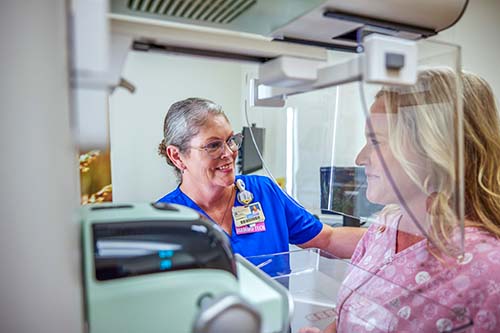MAMMOGRAPHY FACTS
Mammography is a low-dose X-ray examination that can detect breast cancer up to two years before it is large enough to be felt.
Mammography is the single most effective method of early detection.
Screening mammography is an X-ray examination of the breasts with no known breast problems.
Diagnostic mammography is an X-ray examination of the breast(s) with a known problem such as a lump, pain, nipple discharge or thickening, or any unusual changes in the breasts.
A diagnostic mammogram involves various images of the breasts to rule out breast cancer or clarify a suspicious area of the breast.
On average, mammography will detect about 80 to 90% of breast cancers in women without symptoms.
Women older than 40 should have an annual mammogram screening.
If you are in need of a physician, visit Baptist Medical Group for caring providers in multiple locations.

3D Breast Imaging
3D digital mammography takes more precise and detailed images at various angles, which can be reconstructed to create a 3D view of the breast. This technology allows doctors to examine the inner architecture of the breast without distortion, which helps them see abnormalities earlier when breast cancer is most treatable.
Hologic Selenia Dimensions 3D is the latest technology in the battle against breast cancer as it takes advantage of all of the benefits of digital mammography to create unparalleled high-quality images.
3D digital mammography is available at four Baptist Health Care locations:
- Baptist Hospital
- Gulf Breeze Hospital
- Baptist Medical Park - Nine Mile
- Baptist Medical Park - Navarre
Let us schedule your annual mammogram appointment. Schedule an appointment now.
Benefits of 3D Digital Mammography
- Improved accuracy and detection
- Clearer images that show structures in the breast and spatial relationship with surrounding tissue
- Ability to detect breast cancer very early
- Tomosynthesis scans can be quickly performed
- Confidence to rule out cancer without recalling the patient for further study
